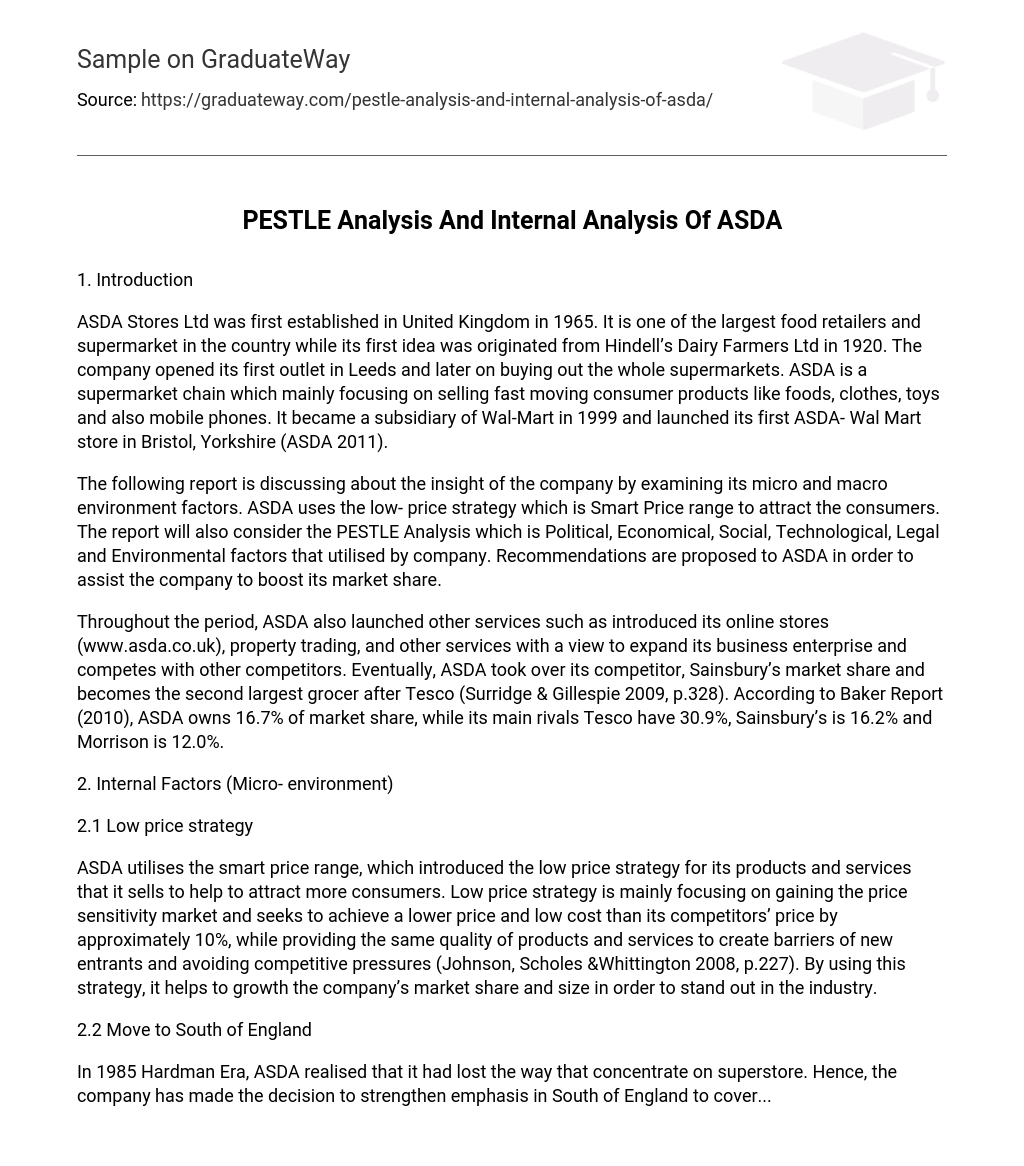1. Introduction
ASDA Stores Ltd was first established in United Kingdom in 1965. It is one of the largest food retailers and supermarket in the country while its first idea was originated from Hindell’s Dairy Farmers Ltd in 1920. The company opened its first outlet in Leeds and later on buying out the whole supermarkets. ASDA is a supermarket chain which mainly focusing on selling fast moving consumer products like foods, clothes, toys and also mobile phones. It became a subsidiary of Wal-Mart in 1999 and launched its first ASDA- Wal Mart store in Bristol, Yorkshire (ASDA 2011).
The following report is discussing about the insight of the company by examining its micro and macro environment factors. ASDA uses the low- price strategy which is Smart Price range to attract the consumers. The report will also consider the PESTLE Analysis which is Political, Economical, Social, Technological, Legal and Environmental factors that utilised by company. Recommendations are proposed to ASDA in order to assist the company to boost its market share.
Throughout the period, ASDA also launched other services such as introduced its online stores (www.asda.co.uk), property trading, and other services with a view to expand its business enterprise and competes with other competitors. Eventually, ASDA took over its competitor, Sainsbury’s market share and becomes the second largest grocer after Tesco (Surridge & Gillespie 2009, p.328). According to Baker Report (2010), ASDA owns 16.7% of market share, while its main rivals Tesco have 30.9%, Sainsbury’s is 16.2% and Morrison is 12.0%.
2. Internal Factors (Micro- environment)
2.1 Low price strategy
ASDA utilises the smart price range, which introduced the low price strategy for its products and services that it sells to help to attract more consumers. Low price strategy is mainly focusing on gaining the price sensitivity market and seeks to achieve a lower price and low cost than its competitors’ price by approximately 10%, while providing the same quality of products and services to create barriers of new entrants and avoiding competitive pressures (Johnson, Scholes &Whittington 2008, p.227). By using this strategy, it helps to growth the company’s market share and size in order to stand out in the industry.
2.2 Move to South of England
In 1985 Hardman Era, ASDA realised that it had lost the way that concentrate on superstore. Hence, the company has made the decision to strengthen emphasis in South of England to cover…





